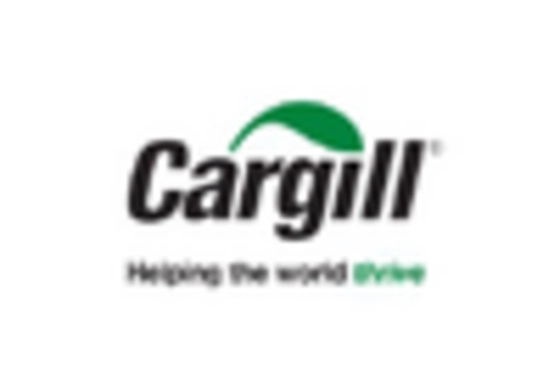Regulatory Framework and Support
The Ethanol Biofuel Market benefits significantly from supportive regulatory frameworks that promote renewable energy sources. Governments are increasingly implementing policies that mandate the blending of biofuels with fossil fuels, thereby creating a stable demand for ethanol. For example, the Renewable Fuel Standard in various regions sets specific targets for biofuel usage, which has led to a marked increase in ethanol production. As of 2025, it is estimated that regulatory incentives could lead to a 15% increase in ethanol consumption compared to previous years. This regulatory support not only fosters market growth but also encourages investment in infrastructure and technology, further solidifying the Ethanol Biofuel Market's position in the energy sector.
Economic Viability and Job Creation
The Ethanol Biofuel Market is becoming increasingly economically viable, contributing to job creation and economic growth. The production and distribution of ethanol create numerous employment opportunities across various sectors, including agriculture, manufacturing, and transportation. As of 2025, the industry is projected to support over 300,000 jobs, reflecting its importance in the economy. Moreover, the use of domestically produced ethanol reduces reliance on imported oil, thereby enhancing energy security and stabilizing local economies. This economic aspect is likely to attract further investments in the Ethanol Biofuel Market, as stakeholders recognize the potential for profitability and sustainability.
Investment in Research and Development
Investment in research and development is a critical driver for the Ethanol Biofuel Market, fostering innovation and improving production methods. Increased funding from both public and private sectors is being directed towards developing advanced biofuels and optimizing existing processes. As of 2025, it is anticipated that R&D expenditures in the ethanol sector could reach $1 billion, focusing on enhancing efficiency and reducing production costs. This investment not only supports technological advancements but also encourages collaboration between academic institutions and industry players. The resulting innovations are likely to position the Ethanol Biofuel Market as a leader in the transition towards sustainable energy solutions.
Technological Innovations in Ethanol Production
The Ethanol Biofuel Market is experiencing a surge in technological innovations that enhance production efficiency and reduce costs. Advanced fermentation techniques and genetically modified organisms are being utilized to increase yield from feedstocks. For instance, the introduction of cellulosic ethanol production methods has the potential to utilize non-food biomass, thereby expanding the feedstock base. This shift not only addresses food security concerns but also aligns with sustainability goals. As of 2025, the industry is projected to witness a compound annual growth rate of approximately 10%, driven by these innovations. Furthermore, the integration of automation and data analytics in production processes is likely to optimize resource use, thereby improving profitability and sustainability in the Ethanol Biofuel Market.
Rising Consumer Awareness and Demand for Clean Energy
There is a notable increase in consumer awareness regarding environmental issues, which is driving demand for clean energy solutions. The Ethanol Biofuel Market is poised to benefit from this trend as consumers increasingly seek sustainable alternatives to traditional fossil fuels. Surveys indicate that a significant percentage of consumers are willing to pay a premium for biofuels that reduce greenhouse gas emissions. This shift in consumer preferences is likely to result in a 20% increase in ethanol sales by 2026. Additionally, the growing popularity of electric vehicles and hybrid models is prompting manufacturers to explore ethanol as a complementary fuel source, further enhancing its appeal in the Ethanol Biofuel Market.


















Leave a Comment